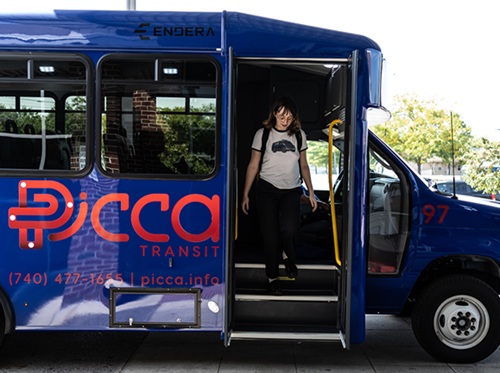The American Association of State Highway and Transportation Officials submitted a 32-page letter on July 22 to the U.S. Department of Transportation containing advice for the agency as to how it can best collect transportation equity data. That letter came in response to a USDOT “Request for Information” issued in May.
[Above photo by the Oregon DOT]
An important theme stressed by AASHTO in its letter is that – given the diversity of populations, norms, and expectations throughout the states and the country as a whole – “one size does not fit all.”
This includes “the many different federal agencies” that will be involved if USDOT adopts any “new or expanded transportation equity data collection program, tool, methodology development, or analytical methodology.”
AASHTO noted that, in general, to determine how well USDOT programs are affecting the safety and security of underserved people, “we first have to make sure we are collecting data in those areas that will help state departments of transportation make that determination.”
Armed with the correct data, AASHTO said state DOTs can then see what type of impact they are having.
“Organizations with limited resources can partner with state DOTs or other planning organizations to identify opportunities that support planning in underserved communities,” AASHTO added.
The group noted in its letter that there is an “existing body of knowledge and research” related to transportation accessibility that can be used to measure access to opportunities – such as jobs, schools, healthcare, etc. – and the impact that changes to the land use system and/or the transportation system has on access to opportunities.
The first resource is the “Transport Access Manual: A Guide for Measuring Connection Between People and Places,” which serves as a guide for understanding how to measure the performance of transport and land use configurations. The second resource is the “National Accessibility Evaluation Pooled-Fund Study,” led by the Minnesota Department of Transportation, which is constructing a “measurement of accessibility” to jobs across the entire country.
“Transportation projects are undertaken to provide connectivity — the ability for people or things to physically travel — between locations, or to lower travel times where connectivity already exists,” AASHTO noted. “As long-term infrastructure investments, transportation systems are not built to satisfy individual trips at specific times, but rather to provide capacity that can be used to satisfy a huge variety of potential trips over the system’s lifetime. Accessibility metrics directly reflect this potential by combining network travel times with the locations and value of the many origins and destinations served by a multimodal transportation system.”
AASHTO also expressed in its letter support for establishing a task force with state DOT representation to “provide recommendations to address current and future needs of the transportation workforce, factors and barriers influencing and attracting individuals—including those from underserved communities.”




